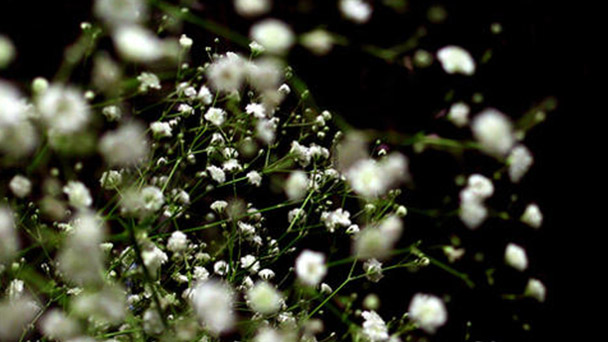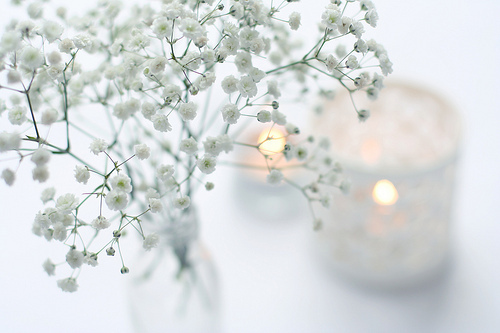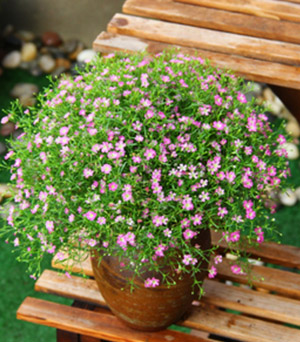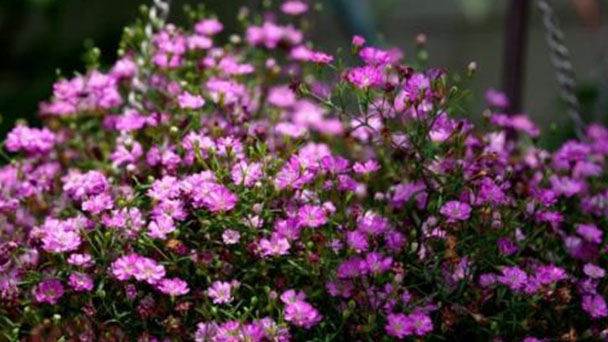Gypsophila Paniculata profile
Written by Maggie
Nov 23 2020

Gypsophila Paniculata, with its small, light colored, fluffy and three-dimensional flowers, elegant and delicate temperament, gives people a sense of dim, excellent inflorescence effect, is an important foil flower material, and is one of the most popular cut flowers of today, with high price and very popular sales.
Gypsophila Paniculata picture

Gypsophila Paniculata is the favorite flower of elegant scholars, which contains the meaning of "pure, far-reaching and romantic".Hundreds of exquisite meticulous, flawless white flowers, loosely scattered together. It likes the boundless sky in the stars, fog hazy, very graceful, elegant beauty, and such as lover's breath as gentle and moving, breeze blowing, fragrance, more warm.
Gypsophila Paniculata morphological characteristics
Gypsophila Paniculata is an annual herb, 30-45 cm tall. Stem is erect, branched, powdery. Leaf is blade linear-lanceolate, middle leaves larger, 2-4 cm long, 2-5 mm wide, apex acute or obtuse, base tapering, glabrous on both surfaces. Paniculate cymes are sparsely spread. Flowers ca. is 12 mm in diameter. Pedicels are slender, 1-3 cm long. Bracts are triangular, margin membranous. Calyx is campanulate, 3-4 mm long, calyx teeth lobed to middle, ovate, apically rounded, margin membranous. Petals are white or pink, oblong, 2-3 times as long as calyx, apically truncate or slightly concave, base acute. Stamens are shorter than petals. Ovaries are ovoid, style short.Capsule are ovoid, longer than persistent calyx. Seeds are 1.2 mm in diameter with blunt neoplasm. Flowering period is from may - June, fruit in July.
Gypsophila Paniculata growth habit
Gypsophila Paniculata likes cool. It’s growth is best under sunny, airy conditions. The suitable temperature for growth is 15C ~ 25C, more than 30 C or less than 10 C easily cause rosette, only long stem does not bloom. Soil requirements are loose, rich in organic matter, water content moderate, PH7 or so.
Gypsophila Paniculata distribution region
Gypsophila Paniculata is native to the dry summer regions of Europe, north Africa and central and western Asia.
Gypsophila Paniculata is often cultivated in China for ornamental purposes. Located in Beijing, Shanghai, Lushan, Jiangxi, Hangzhou, Zhejiang, Hohhot, Inner Mongolia. Europe to the Caucasus, eastern Turkey, Iran also have.

Gypsophila Paniculata propagation method
Gypsophila Paniculata is produced by commercial cut flowers. Tissue culture is the main breeding method for seedling propagation, and cuttage propagation can also be used for some single petal species.
1. Tissue culture: adopt stem tip culture, with high propagation coefficient, good root growth condition and good seedling quality.Tissue culture seedlings were used to produce cut flowers with tall and straight branches, pure color and high quality.
2. Cutting: The rooting rate is not too high, so it is advisable to select 4 ~ 5 pairs of leaves and use root powder or other auxin treatment to cut the cuttings in perlite as substrate, which may not be subject to seasonal restrictions, but the best time is from mid-late March to early July and late September to early November. When the temperature is above 15C, it usually takes 20 days to root.

Gypsophila Paniculata's main use
Cut flowers and marketing: Gypsophila Paniculata has no fixed standards for flower cutting. Most of the flowers in the international market are based on weight. Generally, a branch shall be no less than 10g, and the whole reproductive stem is also cut at the base of the stem.The domestic market generally requires that each branch has three branches.The appropriate time for cutting fresh flowers should be 75 {bf} flowers. If the transportation distance is far, it can be advanced appropriately.
Latest Updated
- Benefits of Bugleweed - 7 Science-backed Health Benefits
- Bugleweed Dangers & Side Effects - Is It Poisonous?
- How to Plant Evergreen Trees - What You Should Know
- When to Plant Evergreens - Grow Guide for Evergreen Trees
- 12 Wonderful Evergreen Shrubs for Your Garden
- 12 Popular Evergreen Plants with Pictures for Beginners
- When And How To Prune A Lilac Bush Like a Pro
- How to Grow & Care for Lilac Vine (Hardenbergia Violacea)
- Japanese Lilac Tree (Syringa Reticulata) Care & Propagation Guide
- Shumard Oak Pros and Cons - What to Know
Popular Articles
- Winter maintenance of Antirrhinum Majus
- How to Grow Terminalia Mantaly Tree
- How to Grow and Care for Crossostephium Chinense
- How to grow Antirrhinum Majus in spring
- Peristeria Elata (Dove Orchid) Profile: Info & Care Guide
- Underwatered Snake Plant (Sansevieria Trifasciata) - Signs And How To Fix
- How to Care for Brazilian Jasmine Plant (Mandevilla Sanderi)
- How to Grow & Care for Graptopetalum Purple Delight in Summer
- Rosa Chinensis (China Rose): Plant Growing & Care Tips
- How to Care for Baby Sun Rose (Aptenia Cordifolia)